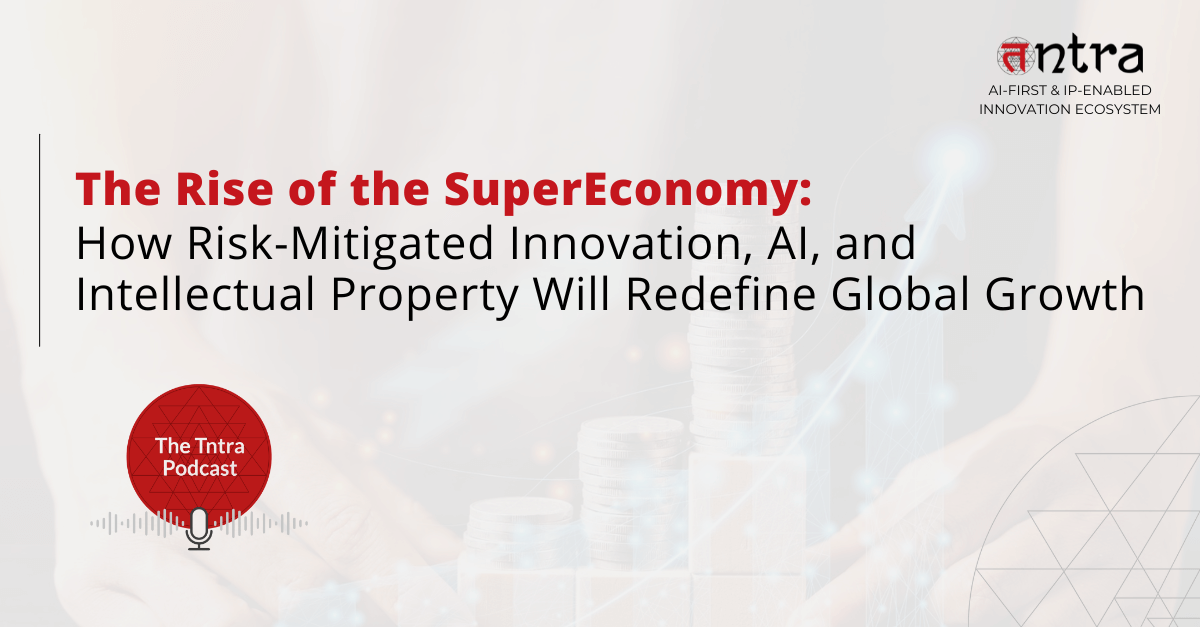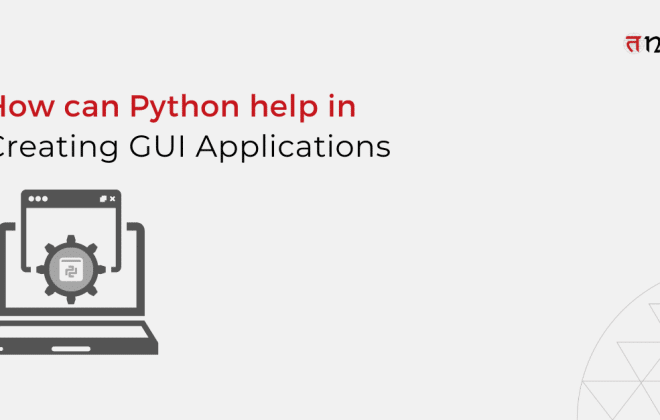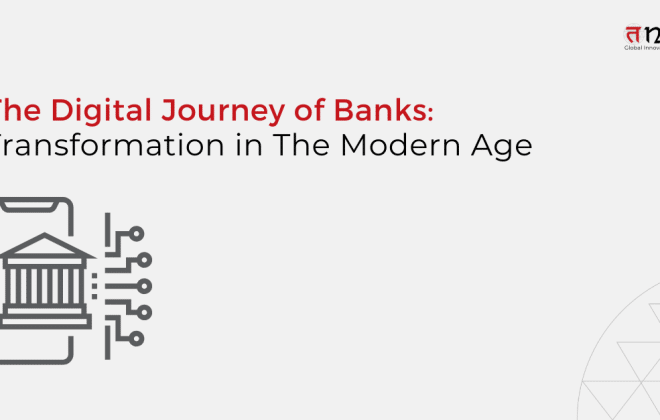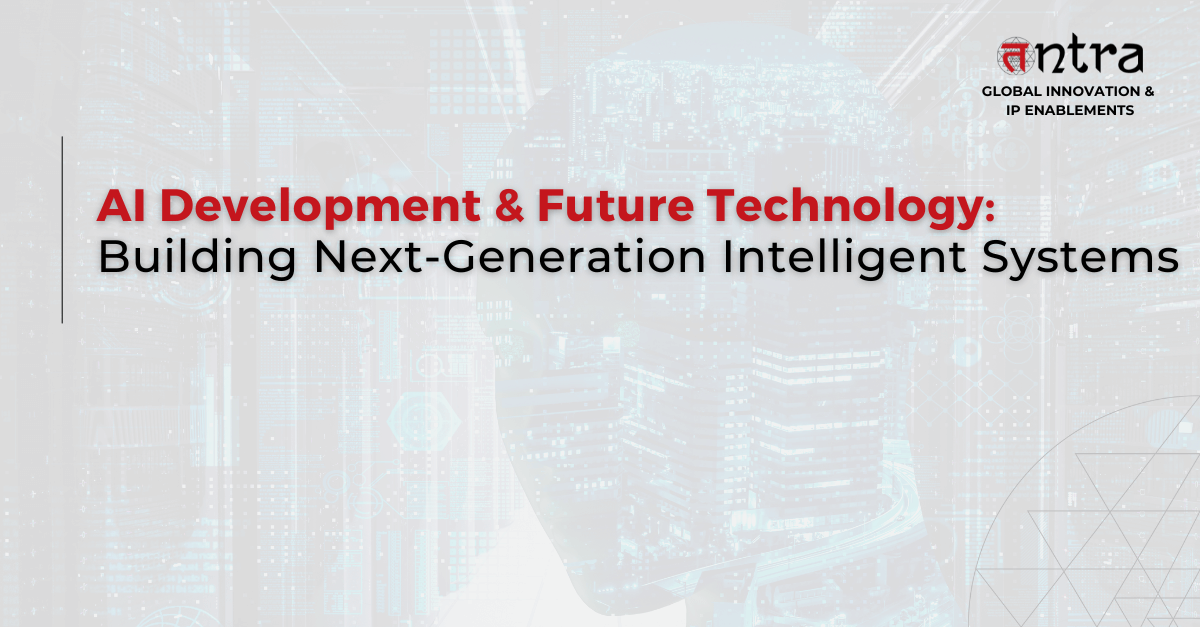
AI Development and the Future of AI Technology: Building Next-Generation Intelligent Systems
Table of Contents
ToggleBusiness leaders and AI developers now join forces to drive the future of AI. This article explores how AI development – leveraging code generators, AutoML, and agent-based frameworks – transform algorithms into adaptive, self-healing intelligent systems. We highlight emerging technologies like edge-optimized models, multimodal fusion, quantum-accelerated machine learning, and ethics-by-design pipelines. Practical insights on building robust data foundations, lifecycle governance, and tomorrow’s workforce skills help decision-makers craft next-generation AI solutions that deliver measurable business value. Interactive prompts encourage reflection and action. Continue reading to learn more.
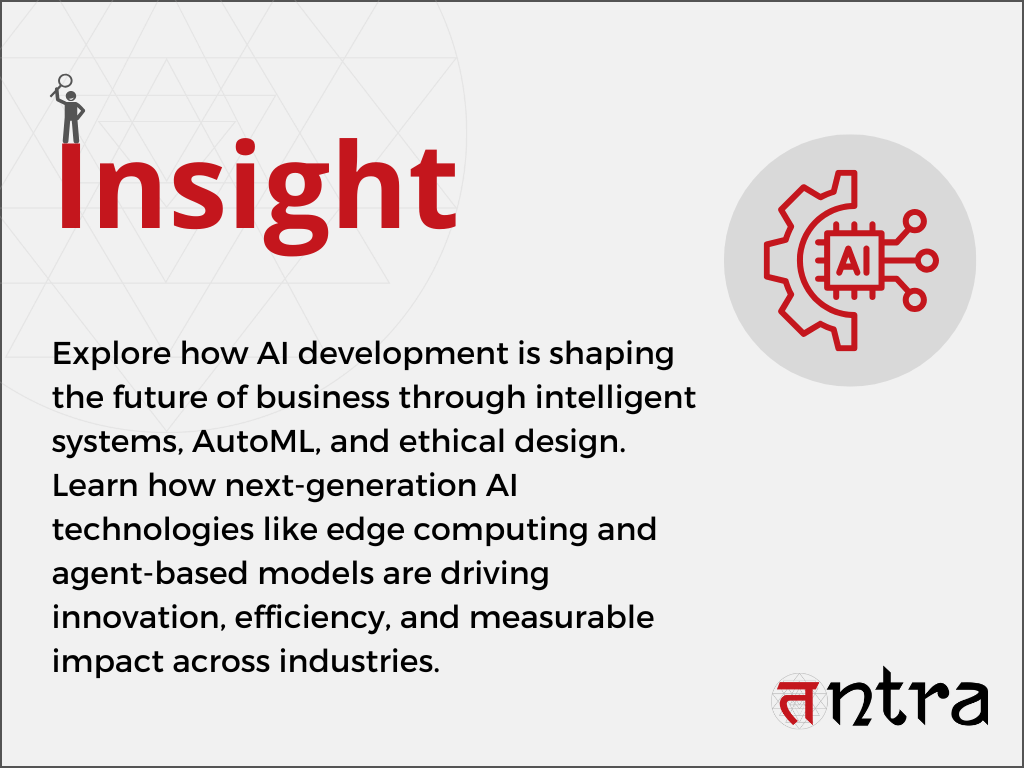
Imagine you’re steering a ship through uncharted waters. That’s what today’s business leaders feel as they navigate the Future of AI – a world where AI developers and decision-makers collaborate to chart courses for Next-generation AI. This isn’t science fiction; it’s happening now. From writing self-healing code to deploying autonomous agents that manage entire processes, the landscape of AI development is shifting under our feet.
Interactive prompt: What’s one AI ambition you’d pursue if you knew your team could build it within six months? Jot it down – you’ll revisit it in our “Next Steps” section.
AI Development: The Human Element Behind the Code
You might think AI development is all about letting algorithms loose on massive datasets. But the truth is more human. Today’s AI developers are part artist, part engineer, and part ethicist. Tools like GitHub Copilot and Anthropic’s Claude Code accelerate boilerplate generation, but they also introduce new challenges – code churn, hidden bugs, and a mountain of unrefactored logic.
- Prompt engineering has become an essential skill, akin to learning a new programming language.
- AutoML platforms automate data pre-processing and hyperparameter tuning, letting you focus on problem framing.
- Agent-based frameworks enable developers to spin up AI “bots” that act on high-level prompts, from drafting code to orchestrating cloud deployments.
Quick check: When was the last time you ran a code-quality audit on AI-generated modules? If it’s been more than a sprint or two, schedule one now.
Future of AI Technology: What’s on the Horizon
As you scout for the best tech to invest in, keep an eye on future of AI technology trends that will drive your ROI:
- Edge-Optimized Models
Tiny neural nets running in cameras, wearables, and industrial sensors will bring real-time analytics without the latency of cloud calls. - Multimodal Fusion
The next wave of Intelligent systems will blend vision, voice, and text in one seamless interface. Imagine a service desk assistant that watches your face for frustration, listens to your words, and types responses that hit the right empathy note. - Quantum-Accelerated ML
Early experiments hint that quantum algorithms can tackle optimization and sampling problems in minutes, not days – potentially slashing training time for massive models. - Ethics-by-Design Pipelines
Regulation like the EU AI Act forces every AI development pipeline to bake in fairness checks, bias detection, and audit trails. Soon, you’ll see compliance gates right in your CI/CD dashboards.
AI Trends: Shaping the Competitive Edge
Keeping pace with artificial intelligence trends isn’t optional – it’s survival. Here’s where smart leaders are placing their bets:
- Democratized AI Tools: No-code/low-code platforms empower citizen developers to build simple chatbots or analytics dashboards.
- Synthetic Data Adoption: To combat privacy and diversity gaps, teams use synthetic datasets to train models that represent under-served populations.
- CIOs to CAIOs: The rise of Chief AI Officers ensures that AI strategy, ethics, and ROI get boardroom airtime.
Reflect: How could democratized AI help your front-line teams innovate? Could synthetic data accelerate a stalled project?
Next-generation AI: Beyond Monolithic Models
We’re moving past the idea of one massive model that does it all. The Next-generation AI ecosystem favors:
- Specialized micro-models deployed close to users or devices.
- Hierarchical agent systems where top-level AIs delegate tasks to purpose-built sub-agents – like one agent for data extraction and another for compliance checks.
- Hybrid symbolic-neural systems that combine rule-based logic with deep learning, unlocking true reasoning and interpretability.
These architectures let you scale responsibly, controlling costs and reducing the carbon footprint of bloated model training runs.
The Future of AI in Business: Turning Hype into Value
For decision-makers, the bottom line is simple: how will these AI solutions drive revenue or cut costs? Consider:
- Predictive Maintenance cuts unplanned downtime by monitoring equipment via IoT sensors and anomaly-detection models – often saving 20–30% in operational costs.
- Personalized Sales Engines dynamically tailor offers based on customer behavior, boosting conversions by 10–15%.
- Automated Compliance Workflows in finance harness NLP to validate documents, slashing manual review time by up to 70%.
Partnering with an AI Services Company or investing in technology consulting solutions can fast-track these wins, leveraging software product engineering services and digital transformation solutions to integrate AI without derailing existing operations.
Building AI Systems: Blueprint for Success
Constructing robust building AI systems demands two pillars:
- Data Foundation
- Centralized, well-governed data lakes.
- Automated data-quality pipelines to catch missing or skewed records.
- Feature stores that version and share pre-engineered features across teams.
- Centralized, well-governed data lakes.
- Lifecycle Governance
- Continuous training and drift detection via CI/CD for models.
- Real-time performance monitoring with alerting thresholds.
- Explainability and audit trails for every model decision, crucial for regulated industries.
- Continuous training and drift detection via CI/CD for models.
Action item: Draft a one-pager on your team’s current data hygiene processes. Where could synthetic data or AutoML improve yield?
AI Programming: Skills for Tomorrow’s Workforce
In this evolving landscape, AI programming isn’t just Python and TensorFlow. Top skills include:
- Prompt Mastery: Crafting prompts that steer large-language models toward high-quality outputs.
- Agent Orchestration: Defining workflows where AI sub-agents interact, pass data, and escalate issues.
- Ethics Engineering: Embedding bias checks and accountability into every stage of development.
Invest in training programs or bootcamps that cover these disciplines, ensuring your teams stay ahead of the curve.
Emerging AI Technologies: What’s Worth Watching
The bleeding edge of innovation brings hope – and risk. Keep tabs on:
- Self-Improving Models: Systems that re-train themselves using operational feedback loops, reducing manual retraining cycles.
- Bio-Inspired Hardware: Neuromorphic chips that mimic brain processes for ultra-efficient inference on the edge.
- Composable Toolchains: Modular platforms where you snap in new algorithms like Lego bricks, accelerating prototyping and vendor swaps.
By experimenting with these emerging AI technologies, you turn R&D from a cost center into a strategic differentiator.
AI Innovation in Action: Case Study Highlights
Consider a global bank that built an autonomous KYC pipeline. By combining OCR, NLP, and risk-scoring agents, they cut onboarding time from five days to under one – improving customer satisfaction scores by 25%. Or a manufacturing leader that deployed embedded ML sensors on its assembly lines, reducing scrap rates by 18%.
These successes hinge on blending software product engineering solutions with domain expertise, illustrating how AI developers and business strategists partner to deliver measurable outcomes.
Future of AI Companies: Who’s Leading the Charge
While startups push boundaries, established tech giants and consultancies drive enterprise adoption:
- OpenAI continues refining foundation models and agent frameworks.
- Anthropic focuses on safety-first architectures.
- Major integrators like IBM Consulting and Accenture AI offer turnkey technology consulting solutions that bundle strategy, implementation, and managed services.
Watching the future of AI companies can help you benchmark vendor capabilities and avoid reinvention.
The Future of AI in Business: Aligning Strategy and Execution
It’s one thing to pilot a chatbot; it’s another to roll out AI across your global operations. Key steps:
- Define Value Metrics: Whether it’s hours saved, revenue uplift, or risk reduced, tie AI projects to clear KPIs.
- Create Cross-Functional Squads: Mix data scientists, domain experts, legal, and UX designers to ensure solutions fit real workflows.
- Scale with Guardrails: Use feature flags and phased rollouts to catch issues early without full-blast deployment.
By embedding these practices, you ensure the future of ai in business isn’t a siloed experiment but a strategic enabler of growth.
AI Services Company vs. In-House Build: Making the Call
Should you hire an AI Services Company, or double down on in-house talent? Consider:
- Time to Market: External partners often bring IP and accelerators that slash development timelines.
- Core Differentiation: If AI is central to your value proposition, building in-house expertise may be worth the investment.
- Risk Appetite: Consultancies shoulder compliance risk, but may lack deep domain nuances that your internal teams hold.
Chart a hybrid model: start with a partner to accelerate pilots, then gradually absorb IP to build your own AI muscle.
Next Steps: Turning Insights into Action
- Revisit Your AI Ambition: Remember that prompt – take that six-month goal and break it into quarterly milestones.
- Audit Your Data and Tools: Identify gaps in your data pipelines and AI toolchain; plan investments or partnerships accordingly.
- Launch an Ethics & Governance Council: Ensure fairness, transparency, and compliance are more than buzzwords.
- Pilot Agentic Workflows: Pick a non-critical process – HR queries, invoice processing, or IT ticketing – and see how AI innovation can automate end-to-end.
By executing these steps, you’ll not only navigate the future of ai technology but actively shape it – turning hype into hard, measurable business value.
In Closing
The Future of AI is a symphony of human judgment, developer creativity, and machine efficiency. As AI developers craft the next wave of Intelligent systems, your role as a decision-maker is to champion the right investments, build ethical guardrails, and foster a culture where humans and machines co-create.
Remember: the technology is thrilling, but it’s your vision and leadership that will turn AI’s potential into tangible impact.
Final interactive check: Which of the “Next Steps” will you tackle first? Drop it into your calendar today.
Schedule a call with Tntra, and get started on your AI journey today.
Contact us now!
FAQs
What is the future development of AI?
The future development of AI focuses on creating more human-like reasoning, advanced natural language understanding, self-learning systems, and ethical, explainable AI. It will transform industries with automation, predictive analytics, and personalized user experiences.
What is the next generation technology in artificial intelligence?
Next-generation AI technologies include generative AI, self-supervised learning, autonomous agents, edge AI, and multimodal systems that understand text, images, and audio together. These innovations aim to make AI more adaptive, scalable, and human-centric.
Which AI is the future of artificial intelligence?
The future of AI lies in systems that are general-purpose, self-learning, and collaborative with humans. Technologies like large language models, reinforcement learning agents, and responsible AI frameworks are leading the way toward this future.
What is the next generation AI development plan?
Next-generation AI development plans focus on improving safety, transparency, scalability, and real-world applications. This includes investing in ethical AI, automating complex workflows, enhancing human-AI collaboration, and building resilient, adaptive systems.
How will AI development impact businesses?
AI development will revolutionize business operations through automation, improved decision-making, customer personalization, cost reduction, and new revenue opportunities, making companies more competitive and innovative.
What are intelligent systems in AI?
Intelligent systems are AI-powered solutions that perceive, reason, learn, and act autonomously or collaboratively with humans. Examples include recommendation engines, autonomous vehicles, virtual assistants, and industrial robots.
How can companies prepare for the future of AI technology?
Companies can prepare by investing in AI talent, adopting ethical AI practices, modernizing data infrastructure, fostering a culture of innovation, and aligning AI strategies with business goals for sustainable growth.
